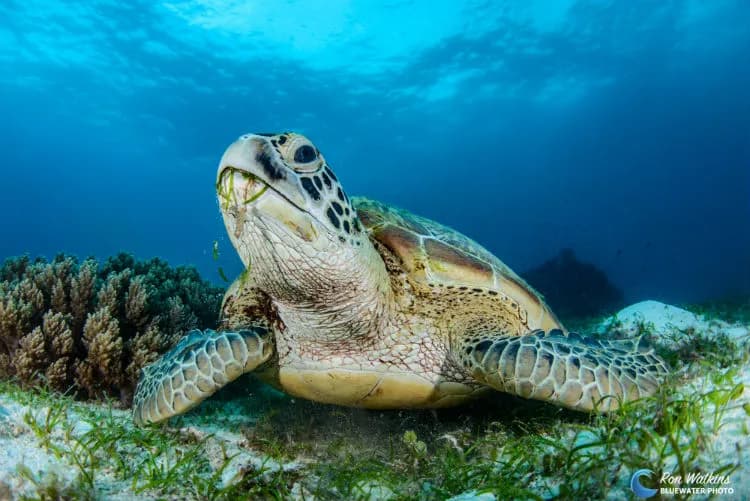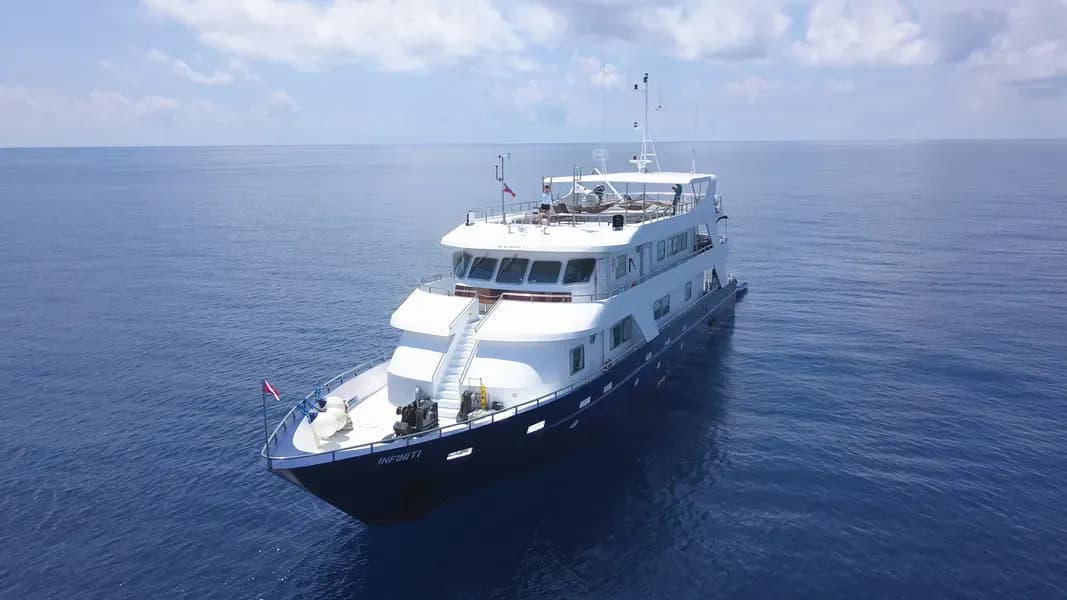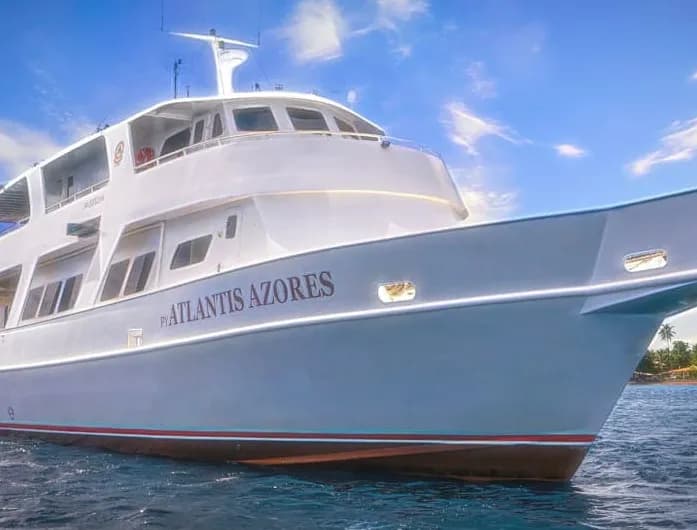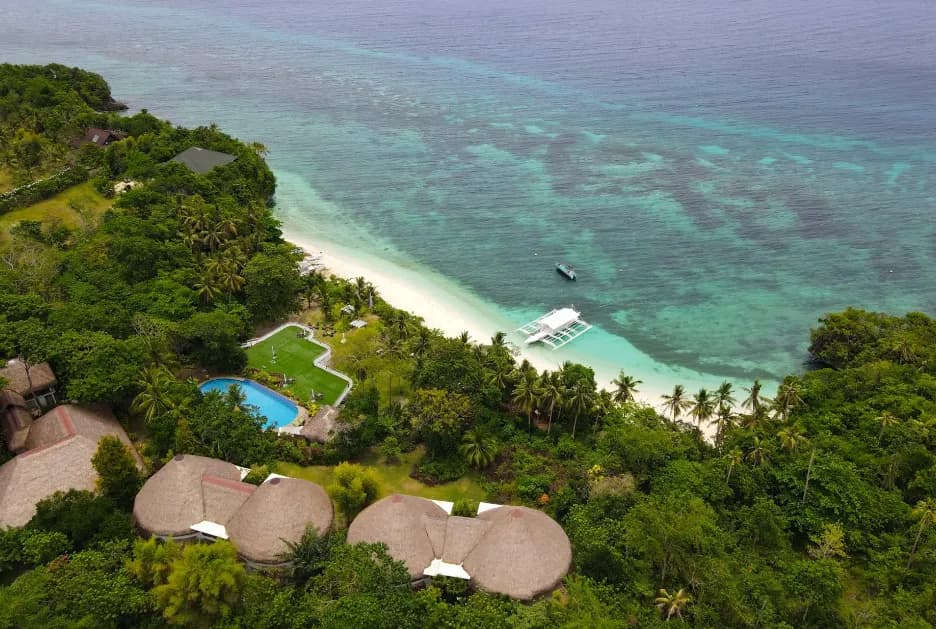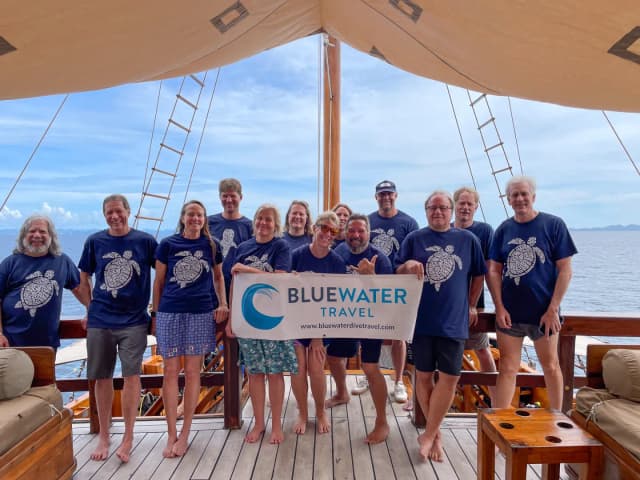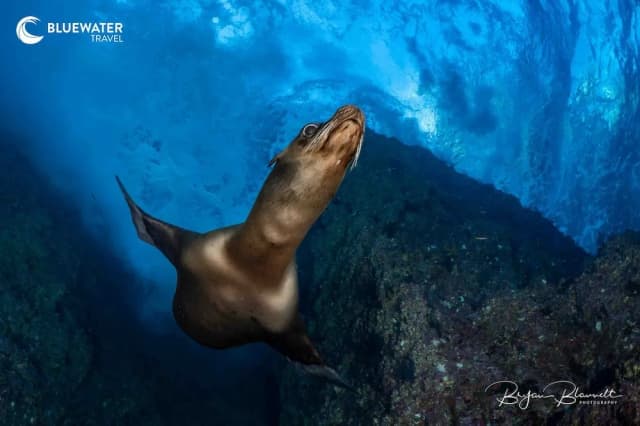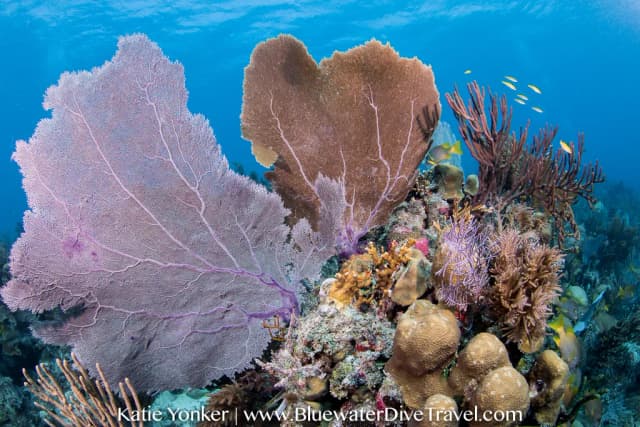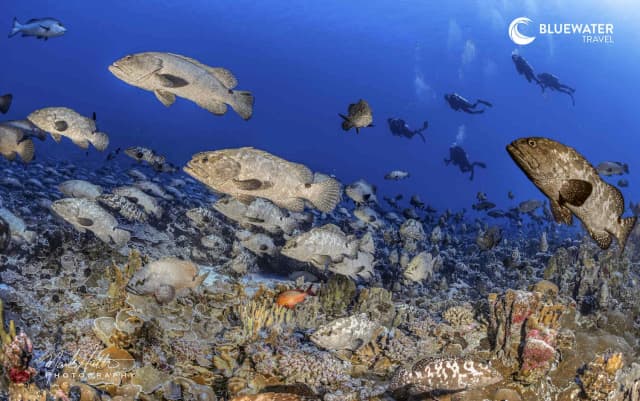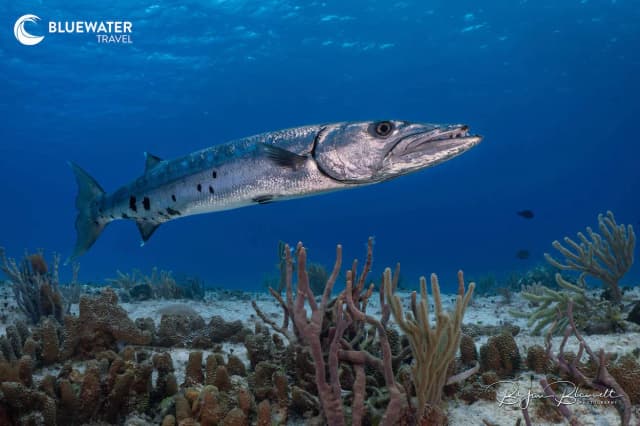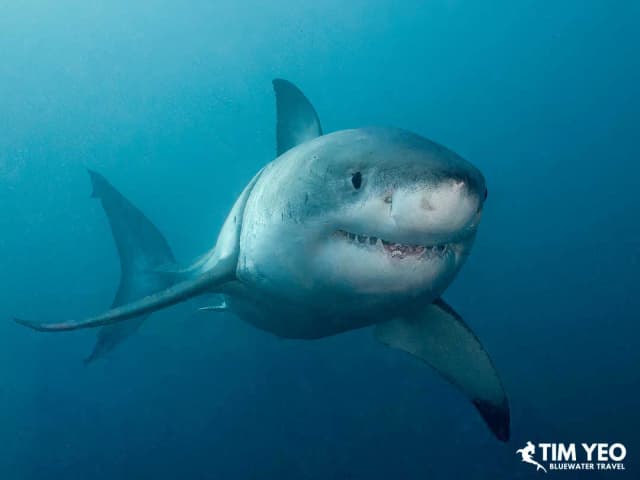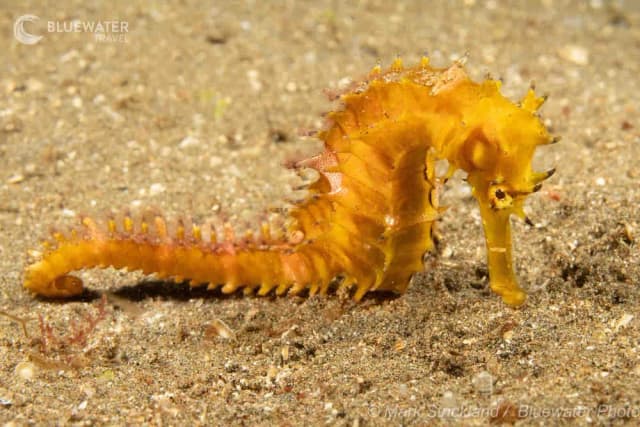Best Of Visayas Trip On The Philippine Siren With Bluewater Photo
After several land-based dive trips to the Philippines, it was exciting to be leading the Bluewater Photo Workshop aboard the Philippine Siren on a 12 day special itinerary designed for us to maximize the best Visayas Sea has to offer and maximize photography opportunities. Prior to this trip, I received numerous questions from people about what lenses they should bring and my advice was, No regrets! If you have it, better bring it. This trip featured the smallest critters (baby frogfish, skeleton crabs, shrimps, nudibranchs, seahorses) to the largest fish (whale sharks) and amazing reefs and everything in between. So the hardest choice of the day for many of us, after deciding which way to have your eggs prepared, was which lens to use for each dive. But the fact that we would hit some of the best sites multiple times made this decision a little less stressful as did the advice of the dive masters. The trip included an available 40 dives (typically 3 day / 1 night) at sites around Balicasag, Cabilao, Oslob, Dauin Coast, Apo Island, Moalboal, and Malapascua, which took us completely around the large Island of Cebu in a clockwise.
A fantastic group of 16 divers from the US, Canada and Mexico, set sail from Cebu the second week of February 2016 after a relaxing overnight stay at the upscale beachfront Movenpick Hotel. After an ice-cold welcome drink and introductions by the cruise directors Shu and Ed, we were shown to our spacious and well equipped staterooms with ensuite bathrooms, TVs and plenty of storage space. Then activity and excitement increased as people set up their dive gear on the spacious bow dive deck and camera gear in the salon camera area. The Siren accommodated our extensive photo/video gear with ease, which included three setup tables, two dedicated drawers per person and plenty of plugs for charging batteries. After thorough safety and dive briefings, we enjoyed the first of many scrumptious local and international dinners served buffet style on the open-air back deck. We then retired to our cabins and went to sleep with visions of the upcoming underwater adventures that started at 730AM the next morning.
For a video recap of the highlights of our trip, check out Dan McGantys video Visayas Islands, Philippines here:
Visayas Islands, Philippines from Dan McGanty on Vimeo.
Cabilao
So what are you waiting for? This was not only the mantra of the Philippine Siren crew they used when the food is ready to eat but also after the dive briefings to get everyone moving and in the water. We dove off of the ships 2 inflatable skiffs in three groups, which intended to spread things out at the dive sites and make for less chaos on the dive deck. Our fist day was spent diving at various sites at Cabilao just off the island of Bohol. The sites around Cabilao, like most of the sites are great macro sites because the reefs are teaming with critters and fish, but the sites like Gorgonian Wall and Lighthouse have incredible walls and reefs covered with large soft corals, sponges and sea fans making for terrific wide angle photography.

Istealthy scorpionfish patiently waits in this purple on the side of a wall at Cabilao
Nikon D800 with Tokina 10-17mm in S&S Housing, Dual S&S YS250 strobes: ISO 200, F/16, 1/200 sec

The healthy soft coral of Cabilao
Nikon D800 with Tokina 10-17mm in S&S Housing, Dual S&S YS250 strobes: ISO 200, F/16, 1/250 sec
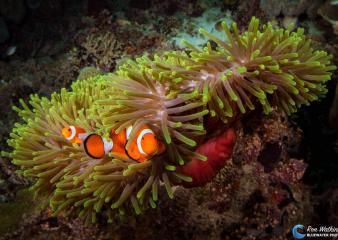
Anemonfish at home
Nikon D800 with Tokina 10-17mm in S&S Housing, Dual S&S YS250 strobes: ISO 200, F/16, 1/250 sec
Balicasag
For the next two days, we called the waters around Balicasag home and dove sites called Sanctuary, Black Forest, Turtle Point, Divers Heaven, and Rudys Rock. Black Forest and Turtle Point was green sea turtle paradise with large fields of turtle grass like an all-you-can-eat buffet. These were some of the healthiest and largest turtles I have ever seen. If you approached them slowly and looked down and pretended to eat grass like them, you could get very close to the turtles.
But turtles werent the only star of Balicasag. The surrounding walls and reefs were teaming with purple anthias, fang blennies, schools of long jawed mackerel and jacks, lionfish, snake eels, several varieties of nembrotha and chromodoris nudibranchs and various crustaceans all over. There was a reason we did two full days of diving here and some of the sites multiple times. Our dives at Balicasag made it difficult to choose which lens when not diving in the turtle grass so I added a section on shooting macro with wide-angle lenses to my workshop. No need to pass up on that fish behavior, the new nudibranch or other small critter just because you didnt have your macro lens on.

Nom Nom Nom! Fields of turtle grass as far as the eye could see made these green sea turtles happy
Nikon D800 with Tokina 10-17mm in S&S Housing, Dual S&S YS250 strobes: ISO 200, F/11, 1/160 sec

A kaleidoscope of colors dance on the walls at Divers Heaven
Nikon D800 with Nikon 16-35mm in S&S Housing, Dual S&S YS250 strobes: ISO 400, F/11, 1/125 sec

Yellowtail fang blenny seductive dance (Shot with wide angle fisheye and cropped)
Nikon D800 with Tokina 10-17mm in S&S Housing, Dual S&S YS250 strobes: ISO 200, F/9, 1/320 sec

Banded Snake eel hunting in the turtle grass By workshop guest Tonie Bowers
Sony RX100 in Nauticam housing, dual S&S YS-D2 strobes: ISO 100, 10.4mm, F2.2, 1/250 sec
Oslob
The town of Oslob on the Island of Cebu is a unique opportunity to dive with whale sharks. Several years ago, the local fisherman had problems with whale sharks getting caught in their nets so they decided to throw handfuls of shrimp in the water away from the nets. This resolved the net problem but they found the whale sharks hung around their boats waiting for a free meal. So the Oslob locals decided to set up eco-tourism to educate people on the whale sharks and to support research. This form of eco-tourism is somewhat controversial because of the modified behavior of the whale sharks, but their research has shown that only a few sharks have continued to frequent the shallows of Oslob regularly and that most only hang out for a short time as they pass by the area. And by noon, the whale sharks typically leave the area and travel to the waters off of Cebu for the majority of their feeding. We received an educational briefing on the whale sharks and then set out at the crack of dawn to scuba dive with them. Typically, people actually snorkel with them and are not permitted to scuba dive with whale sharks. This was a unique experience and for those on the trip that had never seen a whale shark, it was quite exciting and presented a different opportuity for photographs.

A whale shark feeds and is flanked by a school of big mouth jacks
Nikon D800 with Tokina 10-17mm in S&S Housing, Dual S&S YS250 strobes: ISO 400, F/8, 1/250 sec

A whale shark approaches a fishermans canoe (Lightroom B&W conversion)
Nikon D800 with Tokina 10-17mm in S&S Housing, Dual S&S YS250 strobes: ISO 320, F/8, 1/320 sec

A diver swims with the whale shark while trying to capture the moment (Lightroom B&W conversion)
Nikon D800 with Tokina 10-17mm in S&S Housing, Dual S&S YS250 strobes: ISO 320, F/8, 1/320 sec
Dauin Coast
The Dauin Coast, also referred to as Dumaguete because of where you fly into, is critter heaven and home to some amazing muck diving. Every dive is like a scavenger hunt and you never know what strange little creature your DM is going to point out. When we were there, everything seemed to be mating, have eggs, or they were newly born babies. This is the exact reason that Bluewater scheduled a photo workshop at the land based Atmosphere Resort and Spa immediately after the Siren cruise ended. This also why our Siren itinerary had three days in the area for muck diving and nearby Apo Island. On one dive we saw 9 baby frogfish ranging in size of a small pea to the size of a quarter. Night dives are also a treat here with frequent octopus, flamboyant cuttlefish, decorator crabs and other critters out hunting in the safety of darkness.

A tiny shrimp photobombs the frogfish and steals the focus - By workshop guest Helen Brierley
Nikon D800 with Nauticam Housing, Dual S&S DS1 strobes

A flamboyant cuttlefish hunts under the cover of darkness - By workshop guest Helen Brierley
Nikon D800 with Nauticam Housing, Dual S&S DS1 strobes

A juvenile hairy frogfish poses for the camera - By workshop guest Jane Palmer
Canon 70D with 60mm in Nauticam Housing, Dual strobes: ISO 200, F/16, 1/200 sec
Apo Island
Apo is a small little island a short distance from Dauin and we dove three times at the Island. Apo is known for its pristine hard coral gardens and resident population of turtles, sea snakes and healthy hard coral gardens. A typhoon hit Apo a few years back but it is amazing how quickly the corals and marine life have recovered where we dove. The north side of the island is still in a protected status because it got hit the hardest and has not recovered as fast. Visibility at Apo was not ideal the day we were there, but we were still able to enjoy the diving at Coconut Point, Chapel and Rocky Point West. Coconut Point was a swift current dive in the beginning with several spots that were protected so that a diver could duck behind a the reef for reprieve. The corals are very healthy along the wild ride and we saw a large school of jacks and barracuda in addition to at least a dozen sea snakes and turtles fly by.

Safe haven behind a small crinoid covered coral bommie during the Coconut Point drift dive
Nikon D800 with Nikon 16-35mm in S&S Housing, Dual S&S YS250 strobes: ISO 200, F/8, 1/250 sec

Greeting from one of the many curious hunting sea snakes of Apo Island
Nikon D800 with Nikon 16-35mm in S&S Housing, Dual S&S YS250 strobes: ISO 200, F/8, 1/250 sec

Dive Master Shu explores the reefs of Apo Island
Nikon D800 with Nikon 16-35mm in S&S Housing, Dual S&S YS250 strobes: ISO 400, F/11, 1/125 sec
Moalboal
The two days spent diving around Moalboal were a real treat and the photography diversity incredible.
Pescador Island has a massive cavern called the cathedral that has a very eerie silhouette opening and is often full of schooling fish. Several of us dove it twice after doing a special workshop on ambient light photography and silhouettes to improve our opportunity to capture the essence of the cavern. The shallow reefs surrounding Pescador Island were alive with marine life and several people spent their entire dive in the shallows. The Siren crew planned our afternoon dive at Panagsama Beach where a resident school of over 7 million sardines school reside and is a must dive spot. This was an amazing site to photograph, video and just watch the mesmerizing flow of the school. The school was so thick at times that when it passed overhead, day became night with the eclipse. We also dove at Sanctuary for some great macro and later a small airplane wreck at 90 that the siren had never visited but two of our guests had previously dove. The plane provided a great backdrop for some creative photographs with the help of our experienced and brave diver Dan McGanty.
Videographer and model Dan McGanty explores the entrance to the Cathedral as a school of jacks circles
Nikon D800 with Tokina 10-17mm in S&S Housing: ISO 400, F/11, 1/125 sec

Swarm of Sardines overtake us Photo by workshop guest Lori Probst
Olympus EM1 with 12-50mm lens: ISO 200, F/8, 1/125 sec

Living in a bubble - By workshop guest Tim Palmer
Olympus EM5: ISO 200, F/8, 1/100 sec

Is there a body still in that plane? by workshop guest Jane Palmer
Canon 70D with 60mm in Nauticam Housing: ISO 640, F/8, 1/160 sec
Malapascua
If you are a big animal photographer, when you here Malapasqua, you immediately think of thresher sharks because it is one of the only places that you can consistently see them at a cleaning station. I dove with the thresher sharks of Malapasqua several years earlier and they were one of the star attractions on this itinerary that people wanted to see. Unfortunately after two early morning dives to 90 on the cleaning station the illusive sharks proved that wildlife is just that, wild and free to roam. It was very rare that they did not make an appearance, but actually had not been seen for several days so we will need to return and try our luck another time. But we were all treated to several friendly spotted eagle rays near the surface, which is a treat. Malapasqua also has good macro diving and lots of soft coral so we took advantage of the great photo opportunities that Mother Nature presented.
Additional Trip Facts
Conditions in February
Water temperature will be around 75-79 degrees Fahrenheit with average visibility between 50 and 65 feet.
Daily Photo Workshops
Workshops will be given daily on topics such as wide-angle underwater photography, ambient light shots, snorkeling with large animals, strobe exposure and positions, avoiding backscatter, and composition. One-on-one instruction above and below the water was also provided.
Flight Information
Fly in and out of Cebu City through Mactan International Airport (airport code CEB). Later in 2016 they are opening up several more direct flights from international airports on Philippine Air so a stop in Manila will not be required.
The Last dive of the trip

The great crew of the Philippine Siren and Bluewater Photo Workshop guests
